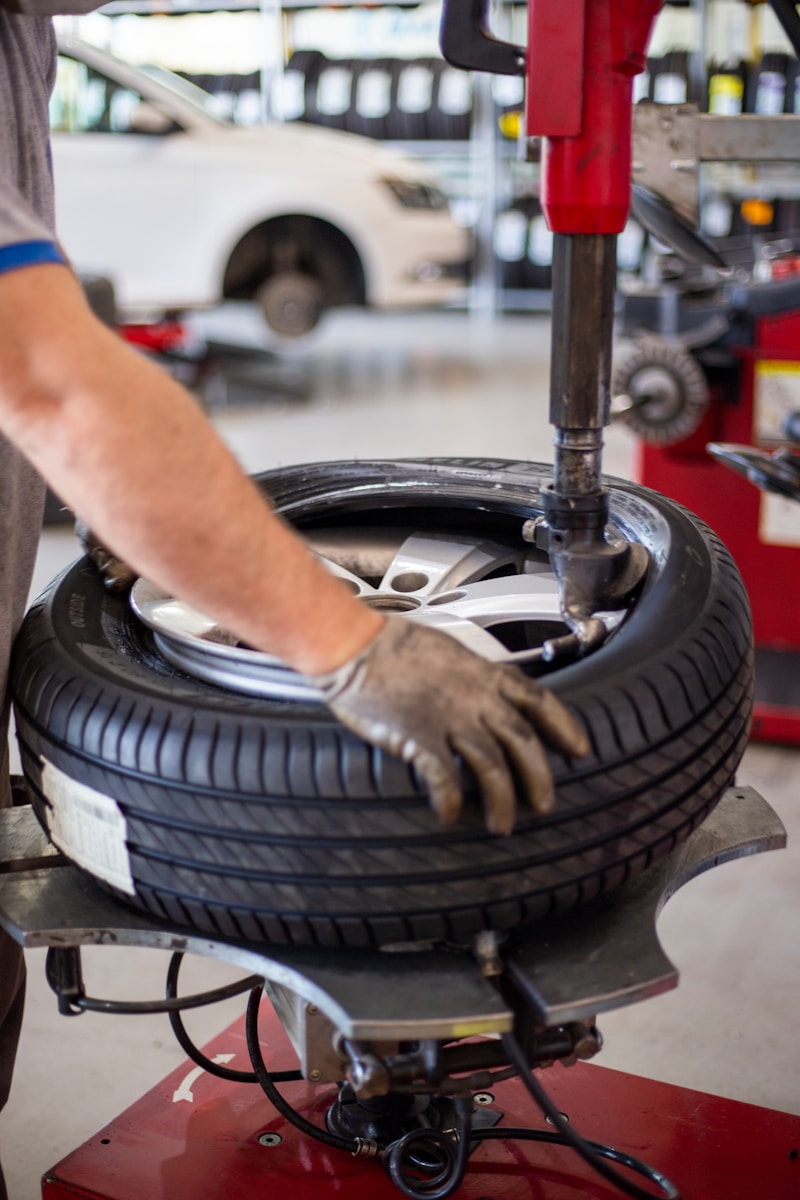Wheel alignment is one of the most overlooked aspects of car maintenance—but when it’s off, your car will tell you. Misalignment doesn’t just affect your comfort while driving. It can also wear out your tires prematurely, reduce fuel efficiency, and even make your vehicle unsafe to drive.
In this guide, you’ll learn the most common signs your car needs an alignment, what causes it to go out of alignment, and how to fix it before it becomes a bigger issue.
What Is a Wheel Alignment?

Wheel alignment refers to how your tires are angled in relation to the car and the road. A proper alignment ensures all four wheels are pointing in the correct direction and make even contact with the pavement.
Alignment involves adjusting:
- Camber (tilt of the wheels inward or outward)
- Toe (direction wheels point compared to each other)
- Caster (angle of the steering axis)
Misalignment in any of these areas can affect handling, comfort, and tire wear.
Top Signs Your Car Needs an Alignment
1. Steering Wheel Pulls to One Side
One of the clearest signs is when your steering wheel pulls left or right on a straight, flat road. You might find yourself constantly correcting your steering to stay in your lane.
2. Uneven or Rapid Tire Wear
If one side of the tire is wearing down more than the other, or your front and rear tires look noticeably different in wear, that’s a big red flag. Misalignment causes your tires to drag or scrub rather than roll smoothly.
3. Steering Wheel Is Off-Center
Is your steering wheel crooked when driving straight? That likely means your wheels are misaligned. The wheel should be centered when the car is going straight ahead.
4. Vibration in the Steering Wheel
A vibrating steering wheel (especially at higher speeds) can indicate several issues, but it’s often a symptom of uneven tire wear due to alignment problems.
5. Car Feels Loose or Wanders
If your vehicle feels unstable or drifts when you’re driving straight, alignment could be the culprit. This “wandering” sensation is especially common at highway speeds.
What Causes Misalignment?
Several factors can knock your wheels out of alignment:
- Potholes and curbs: Even a minor impact can affect alignment
- Worn suspension components: Bushings, ball joints, and tie rods can affect angles
- Accidents or fender benders: Even if cosmetic damage is minor
- Aggressive driving: Hard cornering and sudden stops strain your suspension
- Lift kits or suspension modifications without realignment afterward
How to Check Alignment at Home (Roughly)
While a full alignment check should be done with professional equipment, you can look for early warning signs at home:
- Park on level ground and look at your front tires from above. Are they pointing outward or inward?
- Let go of the steering wheel briefly (in a safe area). Does the car drift?
- Check tire tread depth across each tire’s width. Uneven wear is a warning sign.
If anything feels off, it’s best to get a professional alignment check.
How Often Should You Get an Alignment?

🛠 General Rule:
Every 1–2 years or every 10,000–15,000 miles, depending on your vehicle and driving habits.
You should also get an alignment:
- When installing new tires
- After hitting a major pothole or curb
- After replacing suspension or steering components
- If you notice any of the symptoms above
Benefits of a Proper Wheel Alignment
Getting a proper alignment offers several long-term benefits:
- Improved fuel economy (less rolling resistance)
- Longer tire lifespan
- Smoother, more stable driving experience
- Less strain on suspension components
- Better safety and handling
It’s a small investment that can save you hundreds over time.
Wheel Alignment vs. Tire Balancing
Many drivers confuse these terms. Here’s the difference:
| Service | What It Fixes | Symptoms Addressed |
|---|---|---|
| Wheel Alignment | Adjusts angle of wheels | Pulling, uneven tire wear, steering issues |
| Tire Balancing | Adjusts weight distribution on wheels | Vibration, shaking at speed, noise |
If your car feels “off,” a professional can tell you whether you need one, the other, or both.
FAQs
1. How much does a wheel alignment cost?
A typical alignment costs $75 to $150 depending on whether it’s front-end only or a 4-wheel alignment. Some shops offer lifetime alignment packages if you plan to keep the car long-term.
2. Can I drive with bad alignment?
Technically yes, but it’s not recommended. Poor alignment leads to faster tire wear, worse handling, and reduced safety—especially in emergency maneuvers or on wet roads.
3. Will new tires fix my alignment?
No. Installing new tires doesn’t correct alignment issues. In fact, putting new tires on a misaligned vehicle can ruin them quickly. Always check alignment before or right after getting new tires.
Final Thoughts
If your steering feels off, your car drifts, or your tires are wearing unevenly, chances are your alignment needs attention. Catching it early can save you money on tires, prevent suspension damage, and keep your ride smooth and safe.
Getting an alignment is fast, affordable, and something every driver should prioritize regularly. Think of it as a tune-up for your wheels—your car (and your wallet) will thank you.
Let’s Talk Cars
Have a question? A suggestion? Just want to say hi?
You’re in the right place.
Use the form below to reach out to the AutoSpecs Daily team. We're happy to hear from readers, car lovers, first-time buyers, and anyone who's got something to share.
What can you contact us about?
- Feedback on one of our articles
- Ideas for new topics you'd like us to cover
- Questions about cars, gear, or general auto advice
- Media, partnership, or brand inquiries
- Anything else that's on your mind
We check every message that comes through and do our best to respond within 2 to 3 business days.
We don’t list an email address here to avoid spam, but the contact form is the best and fastest way to reach us.
Thanks for stopping by. We're glad you're here.

